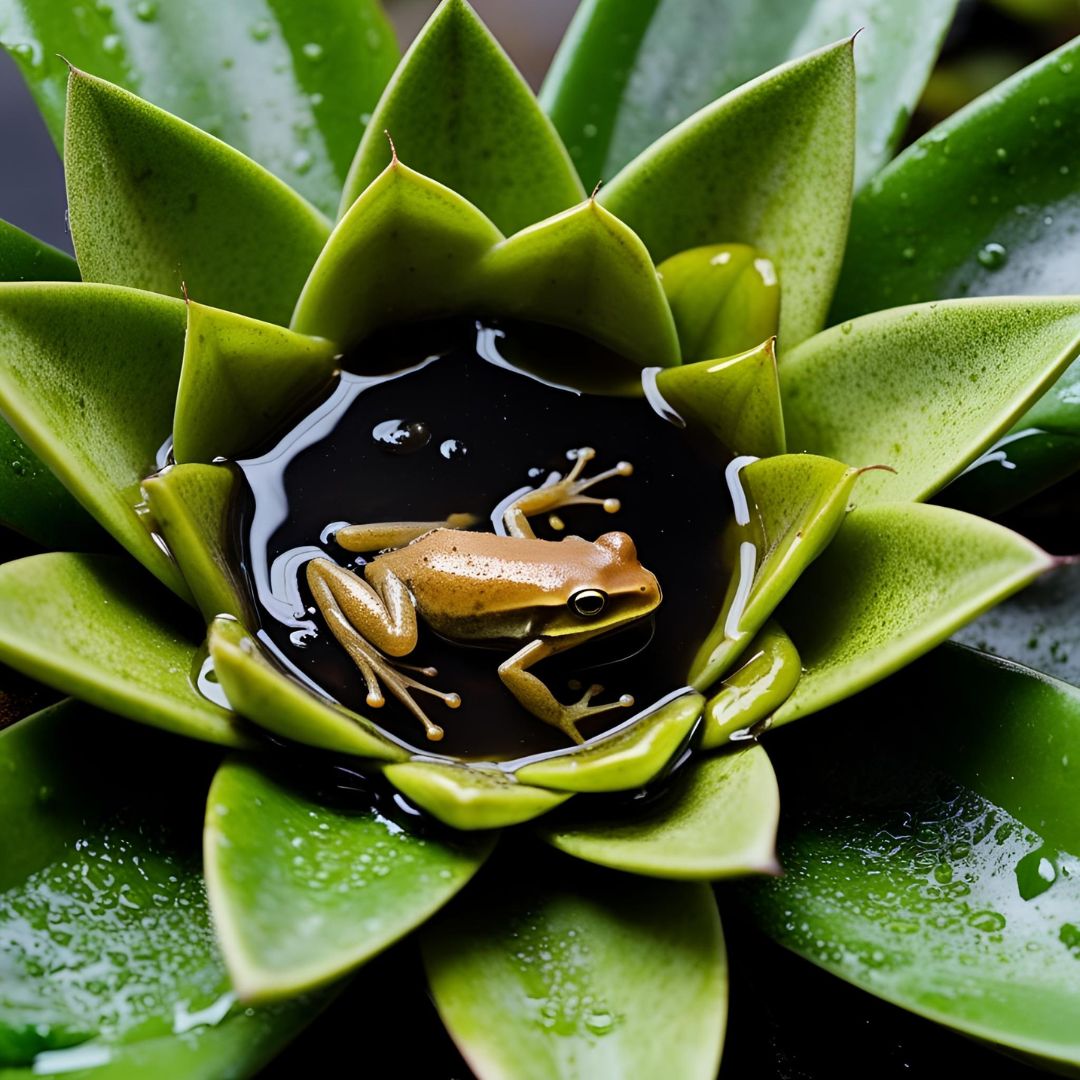Deep in the tropical rainforest, where towering trees demand attention, few realize that an entire natural metropolis may be hiding high in the canopy—inside a single plant. The bromeliad, common throughout the Americas, is more than just an ornamental wonder. It plays a crucial ecological role, hosting tiny yet complex ecosystems. While its rosette-shaped leaves might seem unremarkable at first glance, what happens inside those leaves deserves a closer look through the lens of science and wonder.
The Natural Reservoir in Its Leaves
One of the most fascinating features of bromeliads is their ability to retain water. The central cavity formed by their tightly packed leaves creates a natural reservoir known as a phytotelma. This small water-filled space collects rain and becomes the foundation for a thriving community of life. In just a few milliliters of water, one can find insect larvae, small frogs, algae, bacteria, and even microscopic predators like dragonfly larvae. Essentially, the bromeliad acts as a hanging pond, hosting a complete ecosystem in a single container.
Larvae, Frogs, and Tiny Predators
Among the first inhabitants of this microhabitat are mosquito larvae, which take advantage of the water’s safety and isolation. However, they’re not alone. Tiny frog species, such as the leaf frog (Dendrobates spp.), use bromeliads as nurseries. The females deposit tadpoles into separate bromeliads and regularly return to feed them with unfertilized eggs. This level of parental care is rare among amphibians and highlights how critical these plants are for species survival. Some organisms are so closely tied to bromeliads that they cannot complete their life cycles without them.
Tropical Microworlds and the Food Chain
The biodiversity within a single bromeliad goes beyond what the naked eye can detect. At a microscopic level, algae, protozoa, and bacteria contribute to the food chain. These invisible organisms break down organic matter, recycle nutrients, and keep the water oxygenated, ensuring that the rest of the community can survive. A tiny frog may rely on mosquito larvae, which in turn rely on algae, which only thrive when the water chemistry is balanced. In this way, the bromeliad supports a fully functioning ecosystem within a remarkably small space.
Surprising Ecological Interactions
Even more impressive are the interactions that emerge within this small ecosystem. Some bromeliads harbor ants that protect the plant from herbivores in exchange for shelter. Others attract beetles, centipedes, and even miniature scorpions that hunt within the leaves. These interactions mirror those found in larger ecosystems—predation, competition, symbiosis, and niche occupation—all happening within the size of a teacup. Such complexity in such a confined space underscores the richness of life hidden in plain sight.
Bromeliads as Environmental Indicators
These mini-ecosystems also serve as valuable environmental indicators. Sensitive to changes in water quality and microclimates, bromeliads reflect the health of the broader tropical environment. Scientists study these phytotelmata to track the impact of deforestation, air pollution, and climate change in rainforests. By analyzing life within a single bromeliad, researchers can gather meaningful data about entire ecosystems. It’s an efficient, non-invasive way to assess biodiversity loss and ecological balance.
Zooming In: Learning from the Small Stuff
Educational initiatives like “Zoom on Microworlds” aim to highlight the beauty and complexity of life at small scales. Using magnifying lenses in classrooms, educators reveal the intricate organisms that live in and around bromeliads. This approach inspires curiosity and scientific thinking in children, helping them see that even the tiniest creatures matter. Shifting the focus from lions and eagles to algae and frogs teaches a powerful lesson: every form of life, no matter how small, has a role in the natural world.
Preserving What We Might Overlook
Conservation efforts must look beyond the obvious. Saving ancient trees and endangered mammals is essential, but so is protecting the smaller organisms and their habitats. Bromeliads are often destroyed during land clearing or removed as decorative plants without consideration for the complex ecosystems they support. Every bromeliad lost is an entire community erased. Sustainable gardening, forest preservation, and avoiding pesticides are simple ways we can protect these vital microhabitats.
A New Perspective on Nature
Bromeliads remind us to pay attention to the unnoticed. A single plant, filled with rainwater, holds stories of evolution, survival, and interdependence. When we shift our perspective and take time to observe the small, we uncover layers of natural design and intelligence that rival those of the grandest landscapes. Miniature ecosystems like those inside bromeliads play an outsized role in biodiversity and deserve our respect, protection, and wonder.





